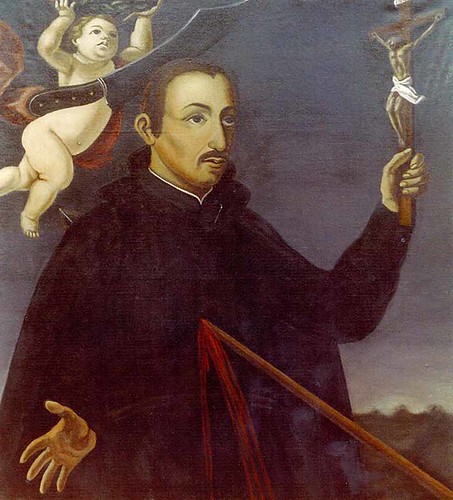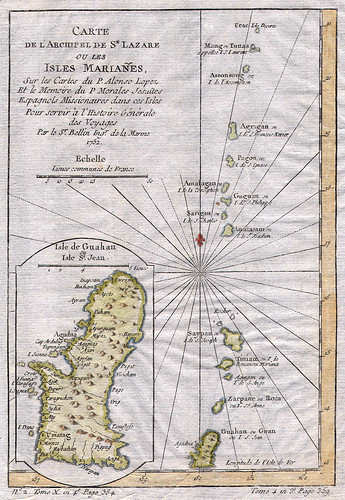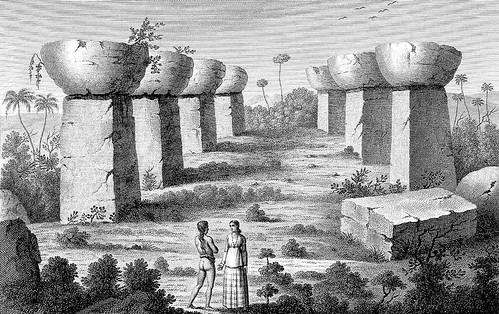Father Luís de Medina
First Catholic martyr
Father Luís de Medina (1637 – 1670) was the first Jesuit martyr of the Marianas. He was born on 3 February 1637 in Málaga, Spain. Medina enrolled at a Jesuit school in that city and was inspired to join the Jesuits. In 1656, he entered the Society of Jesus in Seville, Spain. After meeting some missionaries while in the Society, Medina desired to imitate them and be sent to the Indies as a missionary.
By chance Medina happened to meet Father Diego Luís de San Vitores, who was in Spain at the time organizing a mission to the Ladrones Islands, as the Marianas were called then. Medina decided to join San Vitores in his mission. In 1667, the two of them went to Mexico to pick up supplies for the Marianas and in June 1668, with San Vitores by his side, Medina arrived in Guam.
Medina was injured by some Chamorros/CHamorus in Guam opposing the mission, though he recovered and continued his work. He wanted to go to the most difficult places in the Marianas and so San Vitores sent him to Tinian and Saipan which had the reputation for the most ardent opposition to the Catholic mission.
Medina was partly instrumental in pacifying two warring villages in Tinian in early January of 1670. After peace there was restored, Medina moved on to Saipan. In the village of Cao, unknown today, Medina went looking for infants to baptize on 29 January 1670. He was surrounded by 30 Chamorro armed men who taunted him. The Jesuit missionaries attributed much of this Chamorro opposition to the propaganda of a Chinese castaway, Choco, who convinced many Chamorros that the Jesuits were killing babies through the baptismal water.
Once at Cao, Medina went house to house looking for children to baptize. He ignored the taunts and insults from the young Chamorro men following him and went about his work though his companions urged him to stop. He insisted on entering a house where he heard a child crying. Suddenly he and his assistants were surrounded by the men and their spears. They hurled the spears at Medina, calling him a fool and a child killer. One spear stuck in the middle of his back. He didn’t fall, but rather continued trying to find the crying child. He moved ahead praying until he was struck by a continual rain of spears.
Medina and his Visayan assistant, Hipólito de la Cruz, were killed at Cao, Saipan that day. Another Filipino assistant, Agustín de la Cruz, escaped and told the story to the others. Two Chamorro men, Payo and Daon, were identified as the primary assailants. In April of that year, the Spaniards exhumed Medina and de la Cruz’s bodies and took them to Guam. Medina was buried in the sanctuary of the Hagåtña church.
For further reading
de Viana, Augusto V. “The Pampangos in the Marianas Mission 1668-1684.” Micronesian: Journal of the Humanities and Social Sciences 4, no. 1 (June 2005): 1-16.
Garcia, Francisco SJ. Life and martyrdom of the venerable Father Diego Luis de Sanvitores of the Society of Jesus, first apostle of the Marianas Islands and the happenings in these islands from the year of one thousand and six hundred and sixty-eight, to that of one thousand six hundred eighty-one. Madrid: Ivan Garcia Infanzen, (1683) 1994. In 1980, Sister Felicia Plaza edited books I, II and chapters I–IV of book III (unpublished manuscript in the RFT-MARC Collection, Mangilao, Guam). Partial translation by Margaret Higgins (“First history of Guam.” Guam Recorder, o.s. 13, 14 and 15, 1936–39), which in 1985 was edited into a single unpublished volume by the Nieves M. Flores Memorial Library, Hagåtña, Guam.
Hezel, Francis X., SJ. “From Conversion to Conquest: The Early Spanish Mission in the Marianas.” The Journal of Pacific History 17, no. 3 (1982): 115-37.


